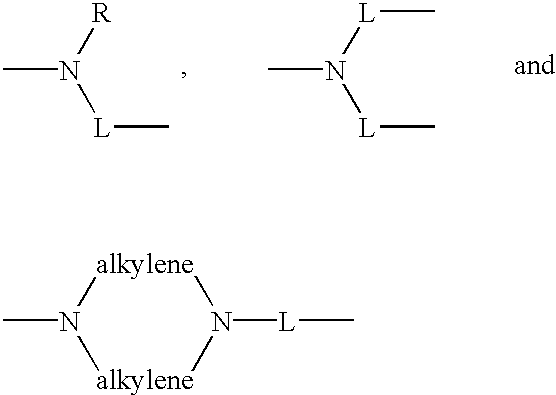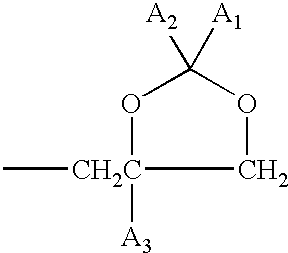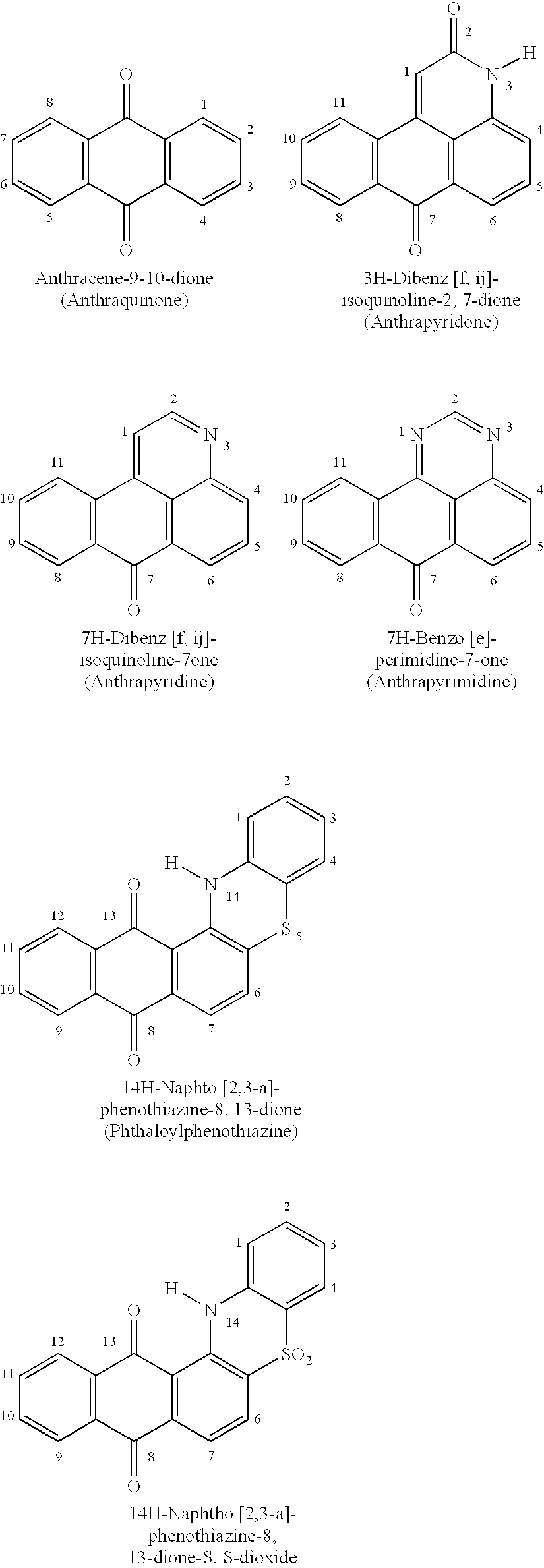Anthraquinone and condensed anthraquinone colorants having sulfonamido linked poly (oxyalkylene) moieties and their preparation
an anthraquinone and condensed anthraquinone technology, applied in the field of anthraquinone and condensed anthraquinone colorants having sulfonamido linked poly (oxyalkylene) moieties and their preparation, can solve the problems of poor solubility of water-soluble polyvinylamine residues in polymeric portion compounds
- Summary
- Abstract
- Description
- Claims
- Application Information
AI Technical Summary
Problems solved by technology
Method used
Image
Examples
example # 1
EXAMPLE #1
##STR31##One hundred grams (0.32 Role) of 1-amino-2-phenoxy-4-hydroxyanthraquinone are dissolved at less than 25.degree. C. in 423 grams of chlorosulfuric acid. The cooling bath is removed and the solution is allowed to warm to room temperature over two hours. The solution is further heated to 60.degree. C. for about two hours after which the heat is removed and the solution is allowed to stir overnight at room temperature. The solution is then poured very gradually into a stirred mixture of water and ice. The red suspension of 1-amino-2-(4'-chlorosulfonyl)phenoxy-4-hydroxyanthraquinone is filtered and washed with ice water several times.
example # 1a
EXAMPLE #1A
##STR32##
A mixture is prepared by adding 91.0 grams (0.19 mole) of a primary amine with an amino equivalent weight of 2.10 meq / g to 44.5 grams sodium carbonate in 400 ml of THF and 200 ml of water. The mixture is cooled to 10-15.degree. C. and 0.18 mole of an aqueous wet cake of freshly prepared 1-amino-2-(4'-chloro-sulfonyl)phenoxy-4-hydroxyanthraquinone from EXAMPLE #1 is added to the mixture. After the addition is complete, the mixture is warmed to 50.degree. C. for an additional two hours to insure complete reaction. Three hundred milliliters of methylene chloride are added followed by 300 ml of water. The methylene chloride solution is separated from the salt water solution, further washed several times with water to neutral pH, and dried over anhydrous magnesium sulfate. The dried solution is filtered and stripped under reduced pressure at 90.degree. C. to give a red product with maximum absorbance at 518 nm.
example # 1b
EXAMPLE #1B
##STR33##
A mixture is prepared by adding 83.3 grams (0.14 mole) of a primary amine with an amine equivalent weight of 1.68 meq / g) to 33 grams sodium carbonate in 400 ml of THF and 200 ml of water. The mixture is cooled to 10-15.degree. C. and 0.13 mole of an aqueous wet cake of freshly prepared 1-amino-2-(4-chlorosulfonyl)-phenoxy-4'-hydroxyanthraquinone from EXAMPLE #1 is added to the mixture. After the addition is complete, the mixture is warmed to 50.degree. C. for an additional two hours to insure complete reaction. Three hundred milliliters of methylene chloride are added followed by 300 milliliters of water. The methylene chloride solution is separated from the salt water solution, further washed several times with water to neutral pH, and dried over anhydrous magnesium sulfate. The dried solution is filtered and stripped under reduced pressure at 90.degree. C. to give a red product with maximum absorbance at 518 nm.
PUM
| Property | Measurement | Unit |
|---|---|---|
| weight percent | aaaaa | aaaaa |
| temperature | aaaaa | aaaaa |
| temperatures | aaaaa | aaaaa |
Abstract
Description
Claims
Application Information
 Login to View More
Login to View More - R&D
- Intellectual Property
- Life Sciences
- Materials
- Tech Scout
- Unparalleled Data Quality
- Higher Quality Content
- 60% Fewer Hallucinations
Browse by: Latest US Patents, China's latest patents, Technical Efficacy Thesaurus, Application Domain, Technology Topic, Popular Technical Reports.
© 2025 PatSnap. All rights reserved.Legal|Privacy policy|Modern Slavery Act Transparency Statement|Sitemap|About US| Contact US: help@patsnap.com



